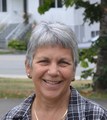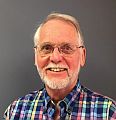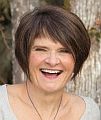WATCH THE VIDEO: “The Partnership for Water Sustainability has its roots in government – provincial, federal, and most importantly, local government. Over three decades, the Partnership has evolved – from a technical committee in the 1990s,to a water roundtable in the first decade of the 2000s, to a legal entity in 2010,” stated Kim Stephens, Partnership Executive Director, in his remarks as part of the Bowen Island Climate Conversation (July 2021)

“Incorporation of the Partnership for Water Sustainability as a non-profit society allows us to carry on the Living Water Smart mission. We are growing a network, not building an organization. In terms of my professional career as a water resource engineer and planner, I have been in the right place at the right time, and with the right people. In a nutshell, my responsibilities revolve around delivering the Water Sustainability Action Plan through partnerships and collaboration, through a local government network,” stated Kim Stephens.
Lifetime Member – Deborah Jones (inducted in 2021)

“When any project is seen as ‘The City’, residents are quick to criticize or complain, elected officials are quick to pass these complaints to staff and staff are quick to ‘backpedal’ — especially if a project is a departure from past practice. No surprise, then, that many municipal officials and staff across all jurisdictions are subject to fear of public embarrassment in relation to rain gardens. By contrast, when rain garden projects are seen as ‘volunteer streamkeepers and school kids’, residents are more willing to cut us some slack if there are issues at the outset,” stated Deborah Jones.
Lifetime Member – Dr. Kim Hyatt (inducted in 2021)

Kim Hyatt made significant contributions to DFO in significant and lasting ways, including his work on the Wild Salmon Policy, advice relating to salmon restoration and recovery under the Columbia River Treaty and climate change impacts to salmon populations. His passion for discovery and excitement for innovation resulted in a number of long-standing relationships with First Nations and external organizations—relationships that Kim built on trust, commitment, and honest communication.
Lifetime Member – Lynn Kriwoken (inducted in 2021)

Lynn Kriwoken played an instrumental role in the creation and launching of the Water Sustainability Action Plan. A true visionary, Lynn saw how the Water Sustainability Action Plan would provide an umbrella for on-the-ground initiatives that would inform provincial policy through the shared responsibility model. There was a natural fit. Her advocacy within government was essential to securing a flow of provincial funding that got the ball rolling and resulted in a self-fulfilling prophecy. Without Lynn Kriwoken, there would not have been an Action Plan. It really is that simple.
Lifetime Member – Hugh Fraser (inducted in 2021)

Shared responsibility is a foundation piece for Delta’s rain garden program. “Everyone in the process, students, designers, managers and constructors, must understand and care about the big-picture goal. This requires an ongoing educational process that instills an ethic. This is a team effort. Nothing would have happened without all working together and continuing to work together. Creating a watershed health legacy will ultimately depend on how well we are able to achieve rain water management improvements on both public and private sides of a watershed,” stated Hugh Fraser.
Lifetime Member – Randy Alexander (inducted in 2021)

“It really is important for all us to be focused on the future. The Drinking Water & Watershed Protection program has mapped out the next 10 years with Action Plan 2.0, but our vision really needs to remain focused on a much longer time horizon. 10 years is not enough. 100 years is what we need to be looking at. Program success depends on our ability to leverage our resources with those of others to achieve common goals, and to understand what those common goals are,” stated Randy Alexander.
Lifetime Member – Carrie Baron (inducted in 2021)

“Each ISMP, or Integrated Stormwater Management Plan, area is unique and must be approached from the perspective of what is required in that watershed. So the key message is that there is no one way for ISMP/watershed approaches; rather, it is a matter of looking at what is needed in each watershed and community, and then basing the approach on those needs. If an ISMP is balanced and holistic, it is a potentially powerful tool because it does enable a local government to address HOW to achieve a watershed vision,” stated Carrie Baron.
Lifetime Member – Nick Leone (inducted in 2021)

“Look for synergies between programs, systems, policies, disciplines and management objectives. Account for uncertainty through acknowledging what we don’t know, and variability in what we do know. Develop effective partnerships that get the vision right and produce sound strategies. he issues around effective water management, and certainly as it pertains watershed planning and restoration efforts, aligns well with fisheries conservation and management considerations. It is not just about the fish,” emphasized Nick Leone, “it is about us and our ability to adapt to change and resiliency,” stated Nick Leone.
WHAT DO YOU WONDER / AT A GLANCE: “This page provides a snapshot of what the reader needs to know in order to have a sense of how the Partnership originated, who we are, and why we do what do in developing tools and resources, delivering programs and facilitating peer-based education under the umbrella of the Water Sustainability Action Plan,” states Ray Fung, Founding Member and Director and a former Chair of the predecessor BC Water Sustainability Committee

“Nested within ‘Living Water Smart, BC’s Water Plan’, the main goal of the Water Sustainability Action Plan is to encourage province-wide implementation of fully integrated water sustainability policies, plans and programs. The Action Plan recognizes that the greatest impact on water, land and water resources occurs through our individual values, choices and behaviour. The Action Plan promotes and facilitates sustainable approaches to water use, land use and water resource management at all levels – from the province to the household; and in all sectors,” states Ray Fung.
STRUCTURE AND GOVERNANCE OF THE PARTNERSHIP: “Directors are the only formal ‘members’ and are the only ones to have voting rights,” stated Ted van der Gulik, President and Board Chair, Partnership for Water Sustainability in British Columbia

“In November 2016, the new Societies Act came into effect in British Columbia. It provided clarity regarding types of societies. This clarity helped the Partnership define its identity as the hub for a convening for action network. The Partnership is not, and cannot be, a member-funded society. The reason is that The Partnership is funded mostly by government and provides services to government. The Directors are empowered to create non-voting categories of membership and to date have created four categories,” stated Ted van der Gulik.

